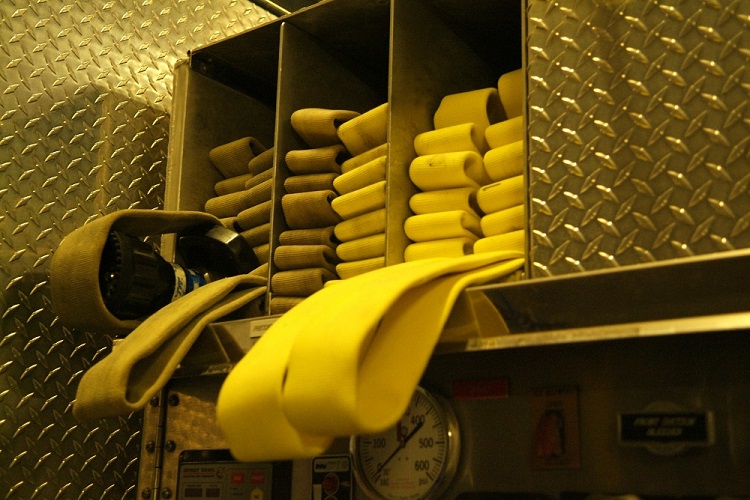
By Mark van der Feyst
When implementing an aggressive fire attack, advancing hose is an important part of our job. Consider the fire service motto, “As the first line goes, so goes the fire.” Getting that first line off the engine and into position is vital to the outcome of our fire attack.
To help us get our lines in place, we have different hose loads on our engines that we can configure. One such load is the “Minuteman” hose load, which is designed to aid the firefighter in getting the initial attack line in place with ease for any type of operation, be it residential, commercial, or high-rise. Whether you are packing a 1¾- or 2½-inch hose line, the Minuteman hose load takes no time to load.
As it is with any project, setting up is the most important part of the operation. With the set-up done properly, the rest of the operation will flow with ease. The Minuteman needs to be loaded and set up correctly for it to work effectively and efficiently (photo 1).
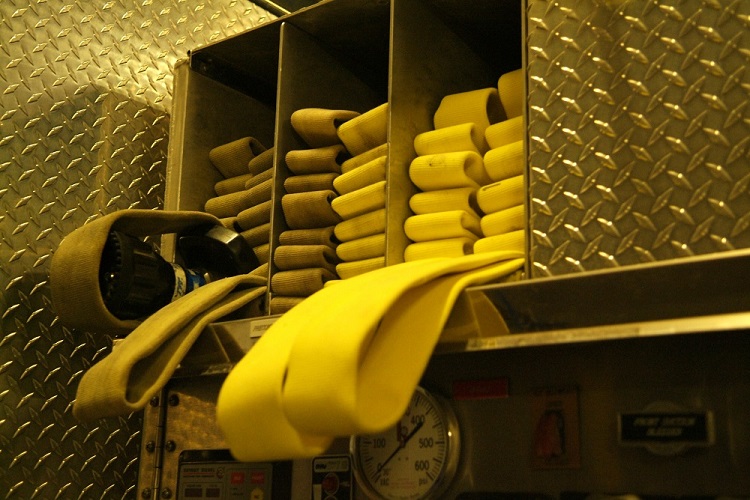
(1) Photos by author.
To load the Minuteman hose load, first determine if you want to load a 150- or 200-foot preconnect. For the 150-foot preconnect, you will need three sections of hose. For the 200-foot preconnect, you will need four sections of hose. The first section of hose will be loaded as you would normally for any flat load. The added step here is to not attach the male coupling to the next section of hose but rather leave it hanging on the opposite side of the load. Attach this male coupling to the female coupling at the very end of the load (photo 2).
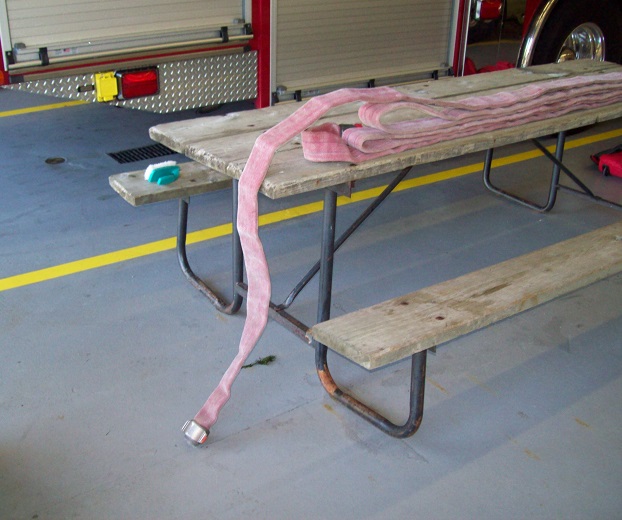
(2)
Next, attach your nozzle to the second section of hose and start feeding the line by placing the nozzle at the edge of the hose load, then begin to underfeed the line to the other edge of the load (photo 3). Once you have underfed the first lay of the second section, wrap the line around the nozzle and continue to flat load the rest of the line (photo 4). If you are double stacking the load, create an identical loop next to the nozzle; this will give you a handle on which to pull to advance the line. From this point, the rest of the load will be a simple flat load.
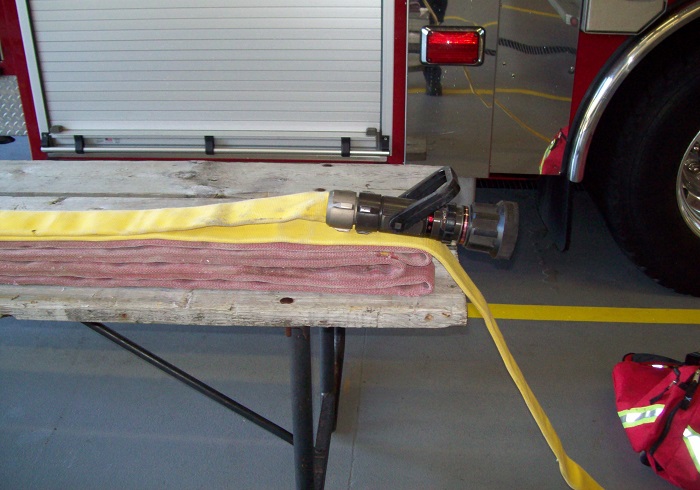
(3)
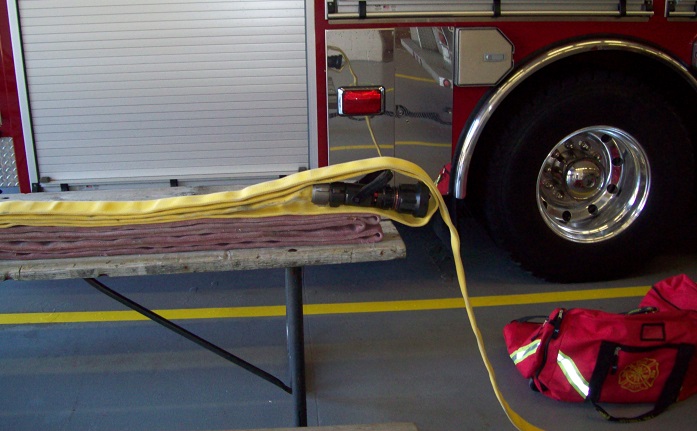
(4)
RELATED: Zaitz on Preconnect Hose Loads ‖ The R.A.M. Hose Lay ‖ Kirby and Lakamp on Common Hose Loads & Configurations
Continue to load the hose until all sections are loaded. At the end of your last section, attach the female coupling to the first male couplingthat was left hanging on the opposite side of the hose load. You are now wrapping the back of the hose load with the first section of hose (photo 5).
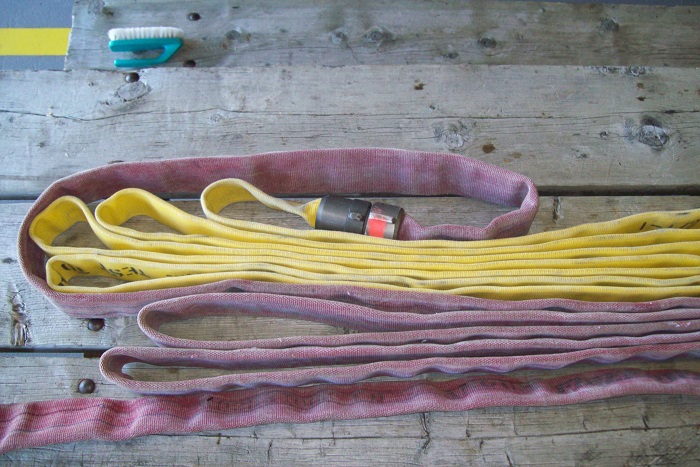
(5)
The best method for loading the Minuteman hose load is to double stack it rather than create a single stack. A double stack hose load will be easier for one firefighter to handle than a single stack load. If you are loading 150 feet of preconnect, then you will have 100 feet of hose on your shoulders; this is not bad if you have a single stack, but it will tend to fall over if you don’t have a firm grip on it. If you are loading 200 feet of preconnect, then you will have 150 feet of hose on your shoulder. You will certainly want a double stack load for this.
One firefighter can pull the Minuteman hose load and advance the line. It is designed to unload itself as you advance toward the fire. The top section of the hose load will start to flake off because it is actually the bottom first section of hose that is connected to the discharge. This unique design allows us to deploy the hose while we are advancing toward the structure.
In photo 6, as the firefighter advances the hoseline, the top part of the line starts to flake off as he advances. Eventually, the hose load will be flaked out, leaving the nozzle in the firefighter’s hand, ready for attack. This method of advancing a hoseline allows for one firefighter to advance the line, the officer to conduct his size-up, the driver to get the pump in gear, and the other firefighter (if there is a fourth firefighter) to aid in any other way.

(6)
Most of our fire attacks are residential fires. The minuteman hose load is perfect for residential fires and high-rise operations. If you don’t pack a high-rise hose pack on your engine, then the Minuteman hose load becomes your high-rise kit. In photo 2, the last coupling of the first 50 feet of hose becomes exposed. The firefighter is now able to uncouple the hoseline from the initial 50-foot section and ends up with a 100- to 150-foot high-rise kit (photos 7 and 8).
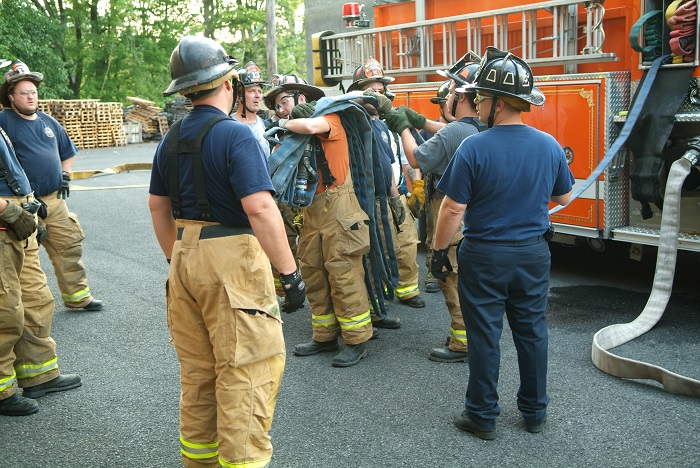
(7)
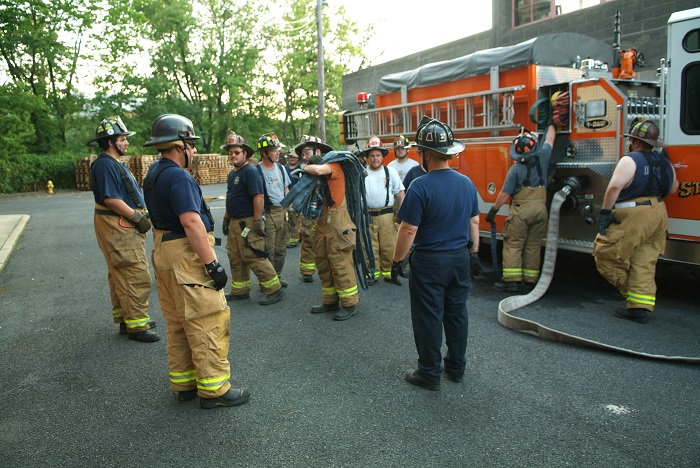
(8)
From here, this firefighter can now walk up to any floor in a high-rise and connect to a standpipe system. He can also advance a Minuteman hose load into a structure and up stairs to the second or third story. If you wanted to advance a dry line to an upper floor, the Minuteman hose load will allow you to accomplish this. You can do the same when advancing a line down a set of stairs.
For this hose load to be effective, train on it a consistently for both loading and advancing. The more familiar you become with this hose load, the better it will work for you.
 Mark van der Feyst has been in the fire service since 1999 and is a full-time firefighter in Ontario, Canada. He is an international instructor teaching in Canada, the United States, and India, and at FDIC. He is a local level suppression instructor for the Pennsylvania State Fire Academy and an instructor for the Justice Institute of British Columbia. He is also the lead author of Residential Fire Rescue (Pennwell).
Mark van der Feyst has been in the fire service since 1999 and is a full-time firefighter in Ontario, Canada. He is an international instructor teaching in Canada, the United States, and India, and at FDIC. He is a local level suppression instructor for the Pennsylvania State Fire Academy and an instructor for the Justice Institute of British Columbia. He is also the lead author of Residential Fire Rescue (Pennwell).
MORE MARK VAN DER FEYST
- Overhead Obstructions
- “Big Fire, Big Water”: The 2½-Inch Hoseline
- SCBA Low Profiling
- Rescue Ready
- Using the Ongoing Size-Up to Build a Profile for Rescue
Mark van der Feyst has been in the fire service since 1999 and is a full-time firefighter in Ontario, Canada. He is an international instructor teaching in Canada, the United States, and India, and at FDIC. He is a local level suppression instructor for the Pennsylvania State Fire Academy and an instructor for the Justice Institute of British Columbia. He is also the lead author of Residential Fire Rescue (Pennwell).
MORE MARK VAN DER FEYST

